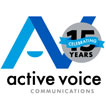
What’s the hardest part of an article to write? If you said, “the introduction,” you’re not alone. A full 80% of AVC writers agree.
Introductions — or, for us journalism folks, leads/ledes — are tough to write because they are so. much. pressure! Not only do they need to pull the reader in, but they also have to set the tone for the rest of the piece and, increasingly, contain keywords, too. What’s a writer to do??
Take a deep breath. Introductions don’t have to be a hang-up. Try these tried-and-true approaches.
1. Pose a question.
While traditional news leads seek to answer as many questions as possible (i.e. the who, what, when, where, how and why), starting with a question can be a good way to draw reader interest. Consider putting forth the question that you intend to answer in your article.
Example: Sunscreen use is up. So why does skin cancer incidence continue to increase?
It gets the reader saying, “Hmm, good question. Why is that? I should read on to find out.”
2. Use staccato.
Derived from the musical definition wherein notes are separated from the others, this is when you start an article with punctuated words or short phrases that quickly evoke pictures in a reader’s mind.
Example: A wide-brimmed hat. 30+ SPF sunscreen. Sunglasses. If your bag doesn’t contain these items, you shouldn’t be venturing out into the sun, dermatologists say.
3. Ask ‘What if…?’
In this approach, you’ll encourage your audience to imagine a scenario that’s thought-provoking or engages their emotions. It could be a scenario that your source has been through or it could be something completely hypothetical that relates back to a product. Either way, the imagination approach primes your audience to feel a certain way.
Example: Imagine going to the doctor on your 29th birthday and being diagnosed with melanoma. That’s exactly what happened to Renee.
4. Try a bold quote.
Sometimes the most compelling statement in the story isn’t something you write — it’s something someone said. Bold statements from trustworthy sources are a good way to draw readers in, because they’ll want to keep reading to find out the context and meaning behind the statement/opinion.
Example: “Suspicious moles account for a small portion of skin cancers. The majority of melanomas arise on apparently normal skin,” says Hugo Martin, MD, PhD, a researcher from ABC University.
5. Start with an intriguing stat.
Gripping readers with an interesting fact or alarming stat can be a good hook. Research your topic for compelling statistics. For instance, for a data security blog post, you could lead with the outrageous number of companies that are hacked each year or the unimaginable cost of such data breaches. For healthcare articles, there is no shortage of shocking stats.
Example: Indoor tanning causes more cases of skin cancer than smoking causes lung cancer.
6. Flip your story on its head.
Sometimes, all you need to do to create intrigue is to approach a story from an unexpected angle. For example, rather than presenting a story on “Seven ways to prevent skin cancer,” consider taking the opposite approach.
Example: Trying to get skin cancer? If you’re doing these five things, you’re well on your way.
7. Set a scene.
This type of introduction leans heavily on descriptive writing to transport the reader to a specific place or time to help tell your story. When setting a scene, describe the sights, the sounds, the smells, the feelings you want to evoke in your readers.
Example: There was something about the glistening water, the shining sand, the toned volleyball players, and the chill of the salt water. Maya could remember everything about her weekends at the beach. What she always forgot, though, was her sunscreen.
8. Compare and contrast.
This technique allows you to paint a picture of two or more vastly different solutions or outcomes. It can help illustrate why someone should take note of the knowledge you are about to provide them and even help sell your products and services.
Example: Jenika is 30 with deep wrinkles and age spots. Meanwhile, Jenika’s sister Alma is 40 with nary a wrinkle in sight. What made the difference? An adulthood of sunscreen use.
9. Opt for a pop quiz.
If BuzzFeed has taught us anything, it’s that people love to put their knowledge to the test, making the pop quiz a virtually irresistible lead in. Of course, this works best when the information is not well-known.
Example:
How many sunburns does it take to double your risk of developing melanoma?
- 5
- 7
- 9
- 13
(And because we know you won’t be able to rest otherwise: The answer is a. 5, according to the Skin Cancer Foundation, which is where we got all of our stats for the examples in this blog post.)
